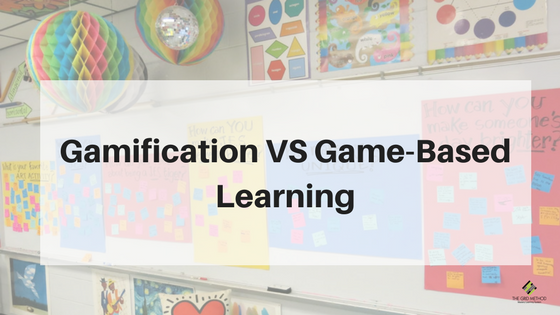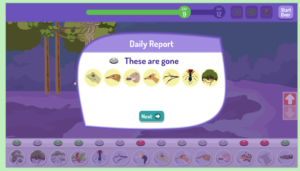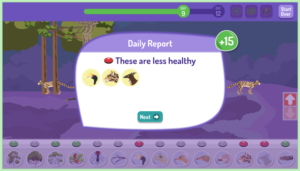Education has really caught on to the phenomenon of gamification or game-based learning. But what’s the difference?
Let me ask you a question. When you say to your class, “We are going to play a game today,” what is there reaction? Do they pout, whine, drag their feet? Of course not! I don’t think it matters whether you teach 3-year-olds or 93-year-olds, everyone loves a good game! Thankfully for all of us game-o-philes out there, education has recently caught on to this phenomenon. And, wow, are there some exciting things happening when games meet education.
You may have heard the phrases “gamification” and “game-based learning” thrown around a lot recently. Perhaps you heard it in professional development session. Or maybe your latest textbook talks about using games for learning to increase student engagement. You may even regularly use Kahoot! or play Jeopardy for review days in your classroom.
All of these are great ways to bring games into education, but what are the differences between gamification and game-based learning? The words are often used as synonyms, but actually refer to distinctly different approaches to teaching and learning.
Let’s dive into those differences.
Game-Based Learning
Game-Based Learning is not a new idea. Using games to teach or review content has been around for centuries. Ancient civilizations even used board games like Go and Chess to learn military strategy.
All of the following are common game-based learning activities for today’s classrooms:
- Kahoot!
- Classroom Jeopardy
- Teams compete during a unit review
- Khan Academy
- Break-Out Games
We can even take a trip down memory lane. Remember early educational games like Oregon Trail or Mavis Beacon Teaches Typing? Even these are game-based learning tools! (A side note- Game-Based Learning doesn’t HAVE to use technology! Always make sure that when you use EdTech, use it well!)
[Scroll down to keep reading.]So, what are the common characteristics of Game-Based Learning? Game-Based learning activities are generally short-term, only lasting one or two class periods. Students either access or practice their learning through the game itself. Many Game-Based Learning experiences actually build important critical thinking skills and problem solving strategies- they aren’t just good for game show style trivia!
Consider this game: Jungle Jeopardy from PBSKids. The basic premise of the game is to build an ecosystem that actually functions! Producers and consumers interact as students try to find the right balance for ecosystem stability. Seems fun and easy, right? It is! Until you start having consumers run out of food and ants disappear from too many predators!
Now, watch conversations about ecosystems happen naturally. How many consumers is too many? How many producers do you need? Ecosystem balance becomes visible, accessible, and significant to them as they play!
Game-Based learning is all about bringing actual games into your classroom. But gamification is all about bringing principles of game design into classrooms. What does that actually mean, though?
Our gaming experience infuses every aspect of our learning! Share on XGamification
You could look a hundred different places and find just as many explanations of what the elements of game design are. Everything from setting to challenge, chance to choice, characters to missions. All of these have a place in a well designed game. But how do those principles apply to your classroom?
Gamification takes students on an adventure. As the game designer, you get to decide what world your students will explore, how it connects to the content you teach, and what their mission will be. Perhaps students are working in NASA, leveling up as they work their way towards becoming the lead astronaut on a mission to Mars. Maybe your classroom turns into an role-playing adventure with students battling orcs and dragons as they gain experience points and magical items. Students progress in the game as they progress in their learning.
In my own classroom, we are all adventurers in the Realm of Karakatora! Our gaming experience infuses every aspect of our learning!
We get quests from the master magician (played by my up-for-anything husband). Getting ready to explore geometry? The game-master needs some help with planning attacks using our new trebuchet. Beginning a unit on figurative language? Stun our enemy by casting an alliterative spell. Students earn experience points as they master content standards. Each concept mastered is another step on their path towards defeating our magical foes.
Engagement and enthusiasm skyrocket when students enter a world of make-believe. The play becomes the learning and the learning becomes the play. Bringing adventure and a gaming world into the classroom allows the two to merge, inspiring students and teachers alike.
What next?
Now that you have a basic idea of what Game-Based Learning and gamification are all about, it’s time to dive in. Which option feels more comfortable? What elements are you already using? How could you expand what you are doing to take learning to a whole new level? Stay tuned for more resources to help you in your game-based and gamified classroom!
Are you ready to level up your classroom?





